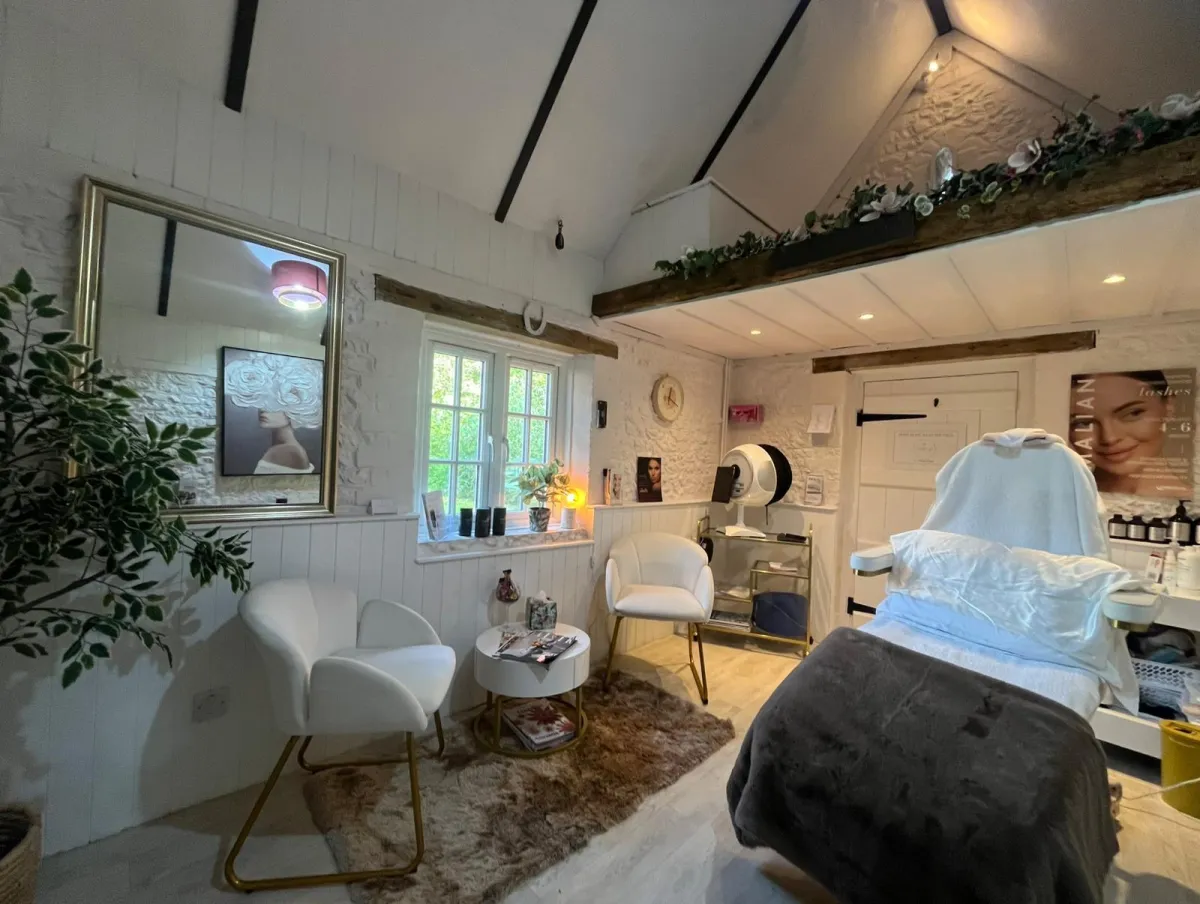SKIN PEELS
At Pom Pom Aesthetics, skin peels are a rejuvenating treatment designed to exfoliate and refresh your skin, reducing fine lines, acne scars, and pigmentation for a smoother, brighter, and more youthful complexion.
Skin Peels
Today, there are numerous forms of gentle acids, which can be used to induce beneficial changes for our skin. The word “acid” tends to make many of us run for the hills, assuming our skin is about to be assaulted by an abrasive chemical that will make the skin on our face peel off in sheets, keeping us inside for a week!
The reality is that there are such strong peels but, at Pom Pom we use various superficial peels, which gently remove the outer layers of dead skin cells and are designed to reduce the appearance of irregularities to reveal a smooth and rejuvenating skin, but without a strong assault to your skin.
Occasionally, there may some mild peeling for a few days after your peel, but at your initial consultation we will suggest you use a bespoke pre-treatment protocol, which we will design specifically for you to use before your peel, as this will help prepare your skin and enhance the treatment
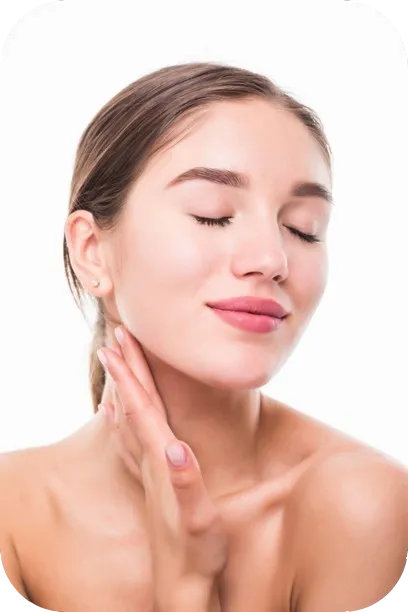
When did chemical skin peels start?
The use of chemical peels to soften and improve the appearance of the skin goes as far back as the ancient Egyptians, nearly 4000 years’ ago, when Cleopatra bathed in her bath of asses’ milk!
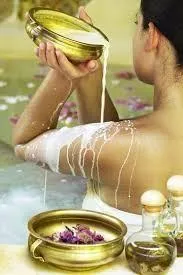
Little did she know that she was benefiting from the superficial skin peeling effects of what are now known as hydroxy acids – the asses’ milk in which she was bathing was, in fact, lactic acid, and on the inside of the grape skins, which her ladies in waiting would have rubbed on to her skin, was tartaric acid! One has to wonder where they actually learned their beauty practices, but they were correct, since, nowadays, these very acids will be found in a huge number of modern beauty products.
Chemical peeling (chemexfoliation) involves the application of a chemical solution to the surface of the skin to produce the careful removal of its outer layers. The amount of skin removed will depend on the type of chemical used, the strength of the product (superficial, medium depth and deep) and how long it is left on the skin. They can be used on most areas of the body but are mostly used on the face or the backs of the hands to improve rough skin texture, fine lines and wrinkles, age spots, sun damage, blemishes, mild scars or acne.
Achieving a “glow” to your skin is one of the great benefits of our peels, as light will now be reflected off the newly smoothed surface of your skin. European women have been routinely having skin peels, since they stimulate the regeneration of cells and in the long run, this will improve your skin health. With our climate and potential environmental damage, they are an affordable protective and preventative treatment, providing you assiduously protect your skin with good sunscreen.
A gentle superficial peel is a wonderful treatment to have about a week before a big event. You will find your make-up sits perfectly and you will feel confident and self-assured as you walk in, glowing with a beautiful “dewy” skin!
What are chemical peels?
Essentially, peels are just a deep chemical exfoliation, taking off the old dead skin cells, thereby revealing the new, young cells beneath. The procedure (chemexfoliation – to give it its proper name) involves the application of a chemical solution to the surface of the skin to produce the careful removal of its outer, more superficial, layers. The amount of skin removed will depend on the type of chemical used, the strength of this solution and how long it is left on the skin.

What skin problems can chemical peels treat?
At Pom Pom, we offer several types of peel, since each has a different strength, method of action and benefit.
Which peel we use will depend on your skin condition, and what you are hoping to achieve.
Chemical peels can be used on most areas of the body, but the commonest use is to improve the appearance of sun or environmentally damaged skin on the face, or the backs of the hands.
Our professional grade peels can help to improve certain skin spots, blemishes, acne or lesions such as actinic (or solar) keratoses. However, if you are considering having a chemical peel, but are concerned about any particular spots, moles or lesions on your face, it is advised that you are seen by a medical dermatology specialist, to ensure you are treated appropriately, before undertaking a dermal peel.
How do they work?
What are the benefits of a skin peel?
They work in a multi-factorial way:
removing the top layers of the skin, helping to stimulate collagen growth, reducing discolouration and congestion, improving the skin’s texture and hydration and improving the overall appearance of your skin.
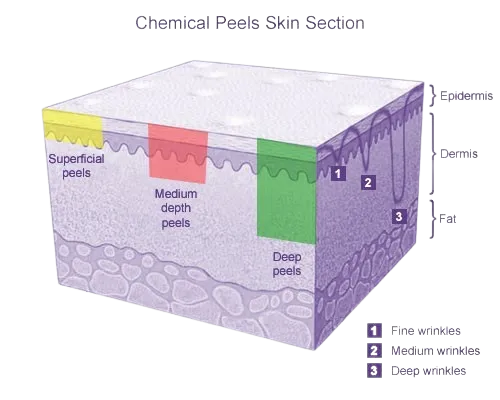
SUPERFICIAL PEELS
Remove the epidermal, or outer layer of the skin.
They are used to help many skin concerns: lessen rough skin texture, remove dry or flaking skin, soften fine lines due to environmental damage, aid in the appearance of mild acne marks, reduce the appearance of “age spots” (brownish patches which can be caused by sun damage) and can help to balance irregular skin tones, such as melasma, chloasma, age-related blemishes, and pregnancy or oral contraceptive discolouration or blemishes.
We find that a course of our superficial peels is highly successful in helping most skin conditions and achieves an excellent result.
Our Pom Pom Professional Peels
Our Enzyme HydroPeel
This is the ideal chemical peel for all skin types wanting to freshen up a dull complexion.
Our gentle and pure blend of papaya enzyme and 15% lactic acid will stimulate cellular renewal and leave your skin looking soft and rehydrated, with a radiant and dewy glow.
It is best to commence your chemical peel journey with us with a minimum of one of these highly active yet gentle exfoliation treatments.
🕒 Duration: 45 mins
Our Purifying Salicylic Peel
With a chemical composition very closely related to aspirin, our beta-hydroxy-acid (BHA) salicylic peel provides deep pore purification, exfoliation, and potent anti-inflammatory actions.
These qualities make our salicylic peel treatment ideal for acne-prone and congested skin types, as well as rosacea sufferers when used at lower concentrations.
This treatment will start at a low level, as we gauge your skin’s tolerance, and the percentage of salicylic acid will be gradually increased in your subsequent peel treatments.
🕒 Duration: 30 mins
The Lactic Brightening & Hydrating Peel
Our lactic brightening & hydrating peel is a highly active yet gentle chemical exfoliation treatment.
This peel amplifies the skin's natural moisture properties and inhibits tyrosinase production. Tyrosinase is a copper-containing enzyme in our tissues that helps catalyse the production of melanin and is one of the factors responsible for brown spots and pigmentation. Our peel solution also stimulates basal cell mitosis, meaning greater skin cell production, thereby helping us achieve a firmer, hydrated, more evenly pigmented, and glowing skin.
🕒 Duration: 30 mins
Our Layered Peel (AHA & BHA)
This peel combines the benefits of both lactic and salicylic acids.
We will tailor a bespoke combination of both acids to directly address your skin’s needs and desired outcomes.
Providing the best of both worlds, this peel addresses concerns such as congestion, problematic acne, premature ageing, hyperpigmentation, dehydration, and fine lines.
🕒 Duration: 45 mins
Our Tetra Acid-50-Peel
This peel is another powerful resurfacing treatment with a potent 50% combination of mandelic, lactic, kojic, and malic acids. As one of our stronger treatments, it helps inhibit pigment production on a cellular level; it brightens and evens out your skin tone whilst deeply exfoliating the outer layers, resulting in a refined surface texture and reduced visible pores, fine lines, and wrinkles.
Mandelic acid is an antibacterial and is oil-soluble, making it an excellent cleanser for congested, oily, and acne-prone skin. It will help tackle breakouts whilst also mattifying the T-zone shine.
As with our Layered Peel, these treatments start at a low level, and if indicated and well tolerated, the intensity of our solution may be increased slowly over subsequent treatments.
🕒 Duration: 30 mins
What concerns are best treated by PDO threads?
• Skin rejuvenation as the thread helps with collagen stimulation
• Skin tightening & lifting
• Increased volume – due to facial volume loss associated with ageing
What does the procedure involve?
Depending on the depth of peel and combination of peels used, different treatment procedures are recommended.
Superficial peel procedure
Your face will be thoroughly cleansed to, temporarily, strip the skin of its natural oils and any surface impurities, which allows our acid solution to penetrate the skin. Your eyes will be covered with dampened cotton pads for protection. The peel is quickly applied to the area to be treated and is left for between 2 - 10 minutes, depending upon the strength and type of hydroxy-acid or enzyme peel used, before it is either washed off or neutralised. Finally, skin and sun protective creams will be applied.
Repeat procedure
These mild peels generally benefit from being repeated, initially, weekly for 4 weeks to obtain the optimum result. This can then be maintained with monthly or bimonthly peels.
How long will it take to recover?
In general, most people can return to work immediately after this procedure. Occasionally, after a couple of days, there may be a minor amount of flaking skin, which we urge you not to pull off, as you could damage the new skin beneath or cause an infection. We will guide you with an appropriate and bespoke after treatment skin care routine.
What should you do after a Peel treatment?
It is most important that you carefully follow our post-procedure advice following your peel treatment. This will help to maintain the benefits of the procedure and reduce the risk of possible complications or side effects.
What are the risks and potential complications from a chemical peel treatment?
During the procedure, most patients experience a mild stinging sensation while the acid is on the face. Your face may be pink after the solution is removed, and there may be a faintish blanched or white discoloration in some areas or a blotchy appearance to the skin. This usually fades and settles within a couple of hours. Some patients do not experience any visible flaking or peeling of their skin after treatment, but rest assured that your treatment will still have a beneficial effect, like a good exfoliation.
Side effects or risks of superficial peels can be hyperpigmentation (too much pigment), which may cause brown areas on the skin. A high-factor sunscreen must be applied whenever going outside to help reduce the potential for this problem.
In rare cases, patients may experience an infection in the skin or an outbreak of cold sores. This normally only occurs in patients who have a history of such complaints. (Anti-viral medication can be prescribed should such complications occur.)
Post Treatment Advice
Cleanse your face gently with a soap-free cleanser, then pat dry with a towel, and moisturise twice a day
Do not pick off any dead or peeling skin, as this may cause bleeding and discolouration, or even mild scarring
Do not expose your skin to the sun without a sunscreen for at least 6 weeks after treatment to reduce the risk of hyperpigmentation (brown spots on the face)
A high factor sunblock should be used daily to protect your skin
Contact us at Pom Pom immediately if you notice any signs of infection or pigment changes
Post Treatment Advice
Depending on the type of peel, we may not recommend treatment if you:
Have a history of problems with keloid or other types of scarring of your skin
Have significantly abnormal skin pigment / colour
Have any current facial infection
Have used the anti-acne treatment isotretinoin within the last 12 months
Have darkly pigmented skin or red hair with freckled skin. In such cases, you would generally be unsuitable for the deeper peels owing to the potential for skin bleaching. Afro-Caribbean or Asian skin is often not suited to facial peels because of the risk of bleaching the skin. This is particularly the case with the deeper peels where the top layers of skin are removed. If you have skin of a darker colour (Fitzpatrick IV and higher), we can discuss and prepare a bespoke package of other, equally beneficial, treatments for you, which do not present any risk of adverse effects
Testimonials
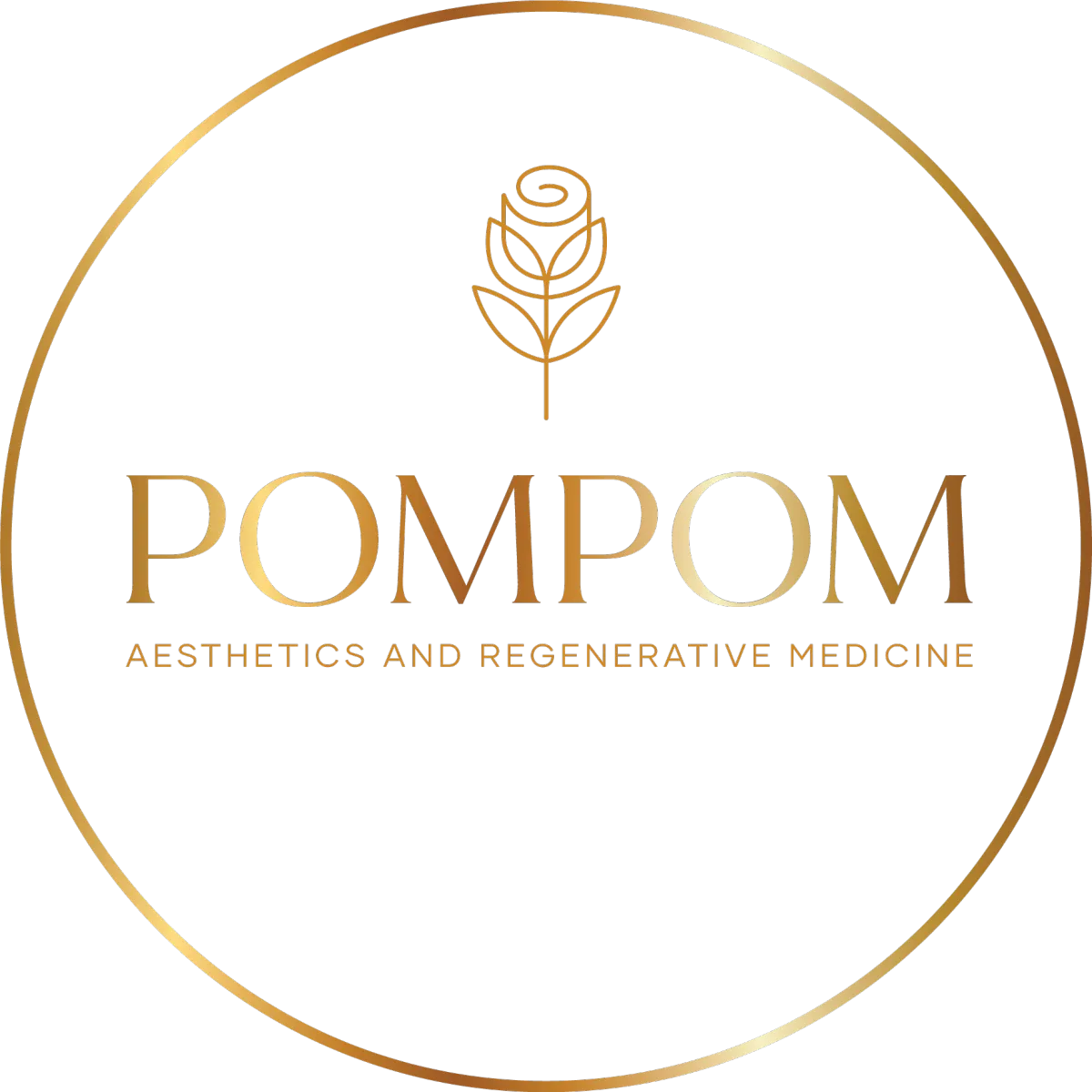

Michelle
(PRP)

I couldn't recommend Pom Pom Aesthetics enough. The level of care, thought, and professionalism is outstanding.
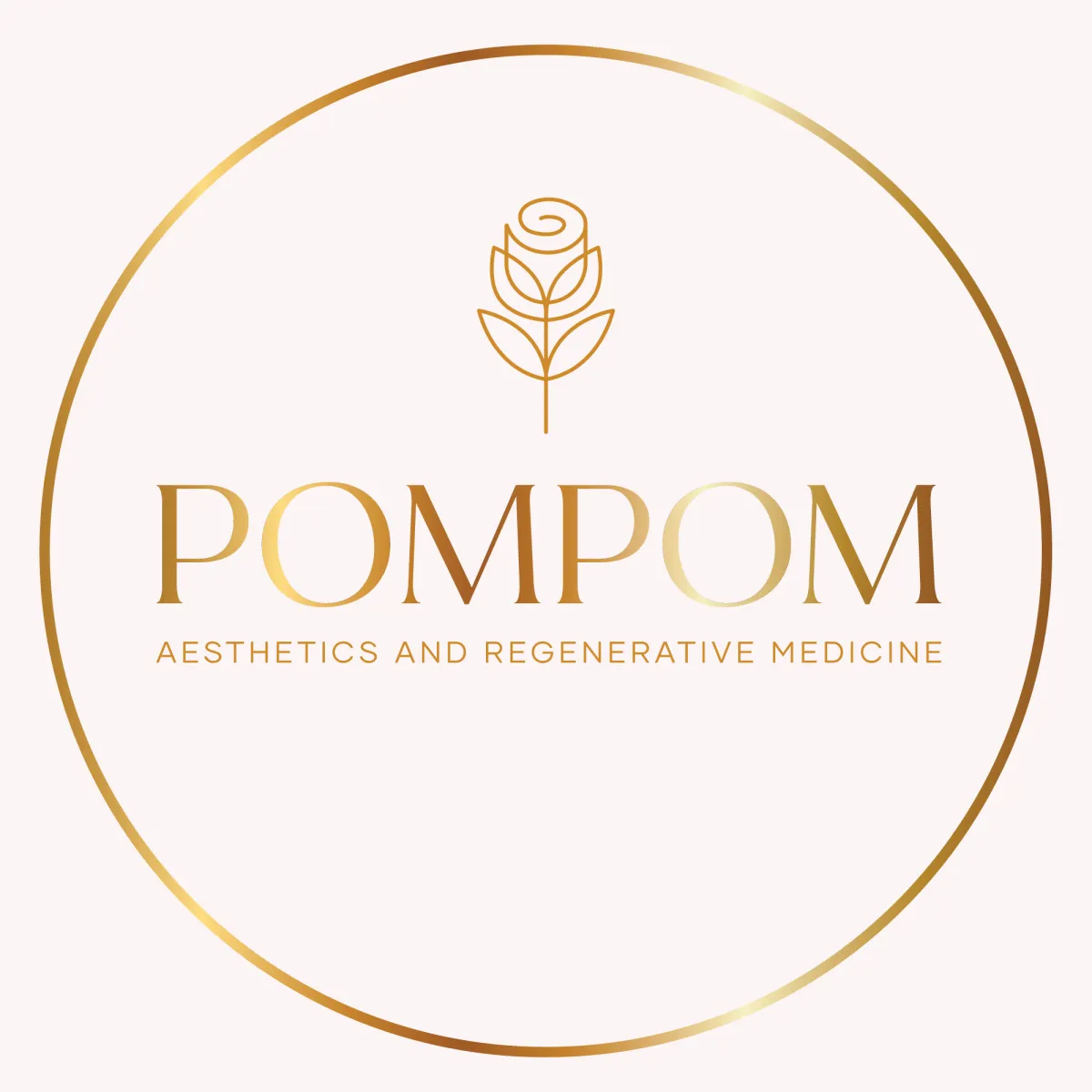

Barbara Smith
(Wrinkle Relaxing)

Many people worry about having a frozen face after having wrinkle-relaxing treatments. It was one of my biggest fears, but Penny assured me that my face had a small amount of movement, and yet I looked refreshed and younger. It was my first experience, and I was so happy, I will be back in three months time.


Annabel
(Dermal Fillers)

Penny from Pom Pom Aesthetics has been my go-to aesthetic practitioner. I trust this clinic and highly recommend their services.


